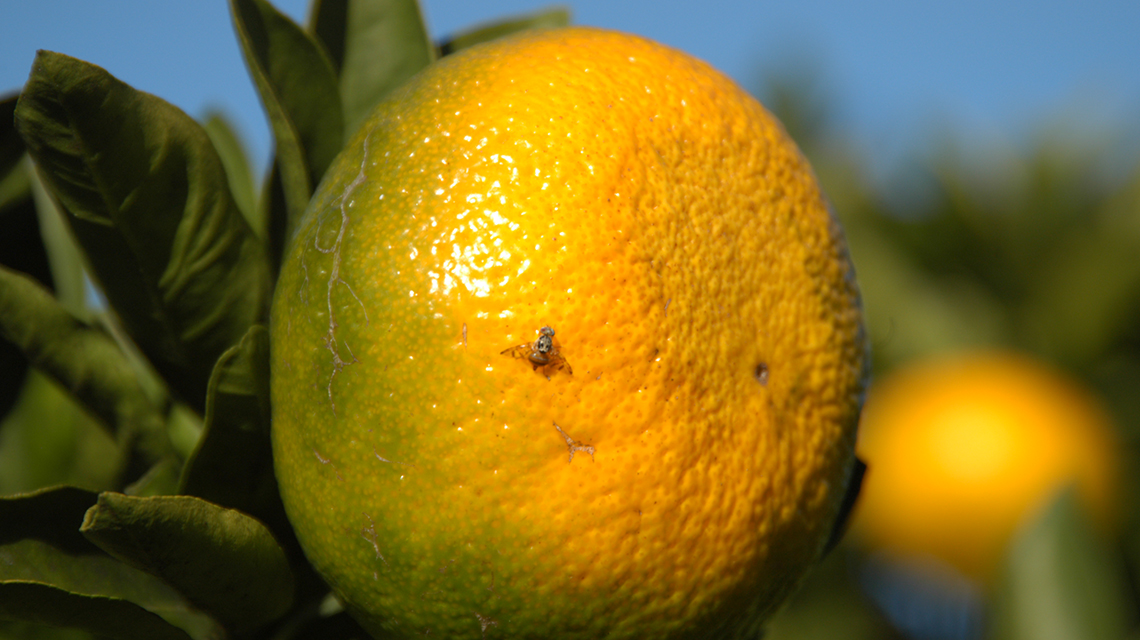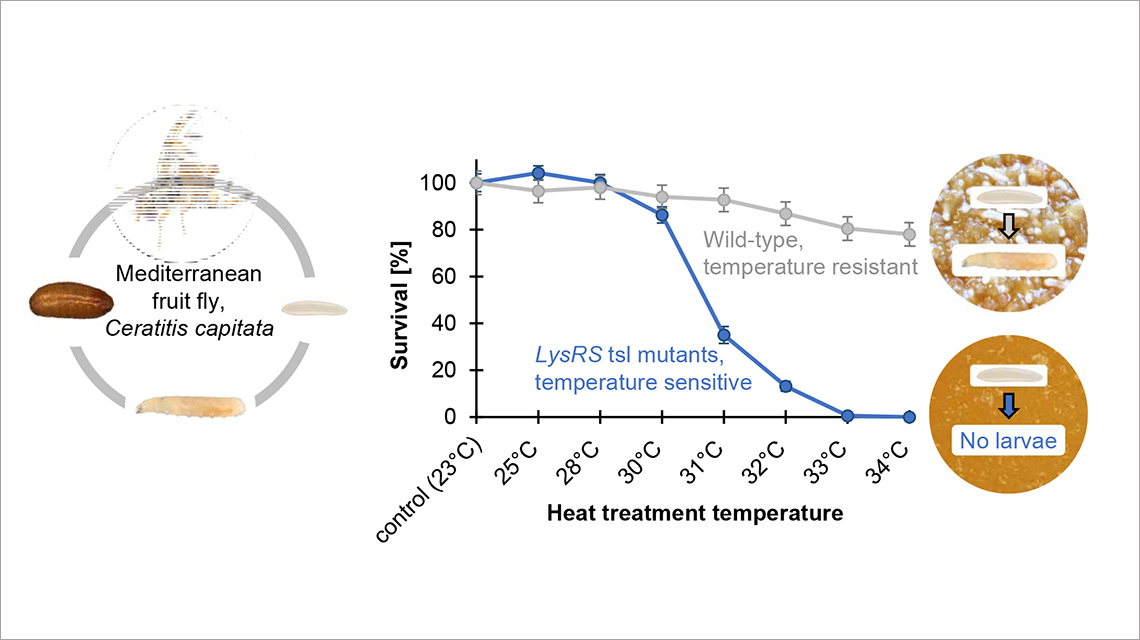An international research team led by Justus Liebig University Giessen (JLU) and the Joint FAO/IAEA Centre of Nuclear Techniques in Food and Agriculture has identified the gene responsible for a temperature-sensitive lethality (tsl) phenotype in the Mediterranean fruit fly (Ceratitis capitata), solving a long-standing mystery.
Genetic Discovery Advances Insect Pest Control Worldwide
An international research team led by Justus Liebig University Giessen and the Joint FAO/IAEA Centre has identified the gene responsible for a temperature-sensitive lethality phenotype in the Mediterranean fruit fly, solving a long-standing mystery.
Sterile Insect Technique
The sterile insect technique (SIT) involves the mass-rearing and sterilization using radiation of a target pest. Sterile males are then released over defined areas, where they mate with wild females, producing no offspring, which reduces the pest population.
The SIT dates back to 1916, when scientists first used X rays to induce sterility in insects. It was successfully implemented in the 1950s against the New World screwworm in the United States of America. Since then, SIT has become a globally recognized and target-specific method to suppress invasive and established insect populations of agriculture, veterinary and medical importance. The effectiveness and efficiency of SIT depends on reliably separating the sexes so that only sterile males are released in the field.
A breakthrough came in the late 1980s with the discovery of the tsl mutation at the Joint FAO/IAEA Centre’s Insect Pest Control Laboratory. This was followed by the development of tsl based genetic sexing in Ceratitis capitata, in which female offspring die at the embryonic stage following short-term heat treatment. This made it possible to produce sterile male flies at an industrial scale. Yet the gene underlying this effect remained unidentified for more than three decades, limiting the broader application of this approach to other insect species.
Understanding the Genetics of Tsl-based Sex Separation
After years of molecular investigation, the team has now succeeded in identifying a single-point mutation in the Lysyl-tRNA synthetase (LysRS) gene, which is present and highly similar in many insect species. They introduced the mutation into wild-type lines, resulting in the same tsl effect: male-only development following brief heat exposure.
This provides, for the first time, a defined basis for tsl-based sex separation that is genetically understood, opening the door for its use in controlling other pest species that affect agriculture and public health.
“This discovery is a true milestone. After more than 35 years of research, we now have a precise molecular handle on temperature-sensitive lethality,” said Kostas Bourtzis, a molecular biologist in the Joint Centre’s Insect Pest Control Section and co-author of the study. “This opens up the possibility of expanding genetic sexing systems to a wide range of insect pests with agricultural, veterinary and medical relevance — a major advancement for SIT programmes globally.”
“With the identification of the tsl gene, we are closing a major knowledge gap that has long hindered the application of genetic sexing beyond the Mediterranean fruit fly,” said Marc F. Schetelig, professor of insect biotechnology in plant protection at JLU and liaison officer at the newly established Liebig Centre for Agroecology and Climate Impact Research, also a co-author of the study. “This paves the way for highly specific and sustainable insect control strategies without the use of chemical insecticides.”
The study exemplifies the longstanding close strategic partnership between JLU and the Joint FAO/IAEA Centre. With recent designation of the Liebig Centre for Agroecology and Climate Impact Research as an IAEA Collaborating Centre in May 2025, this collaboration has been institutionalized, enabling the joint development of biotechnology tools for sustainable insect pest control on a global scale.

